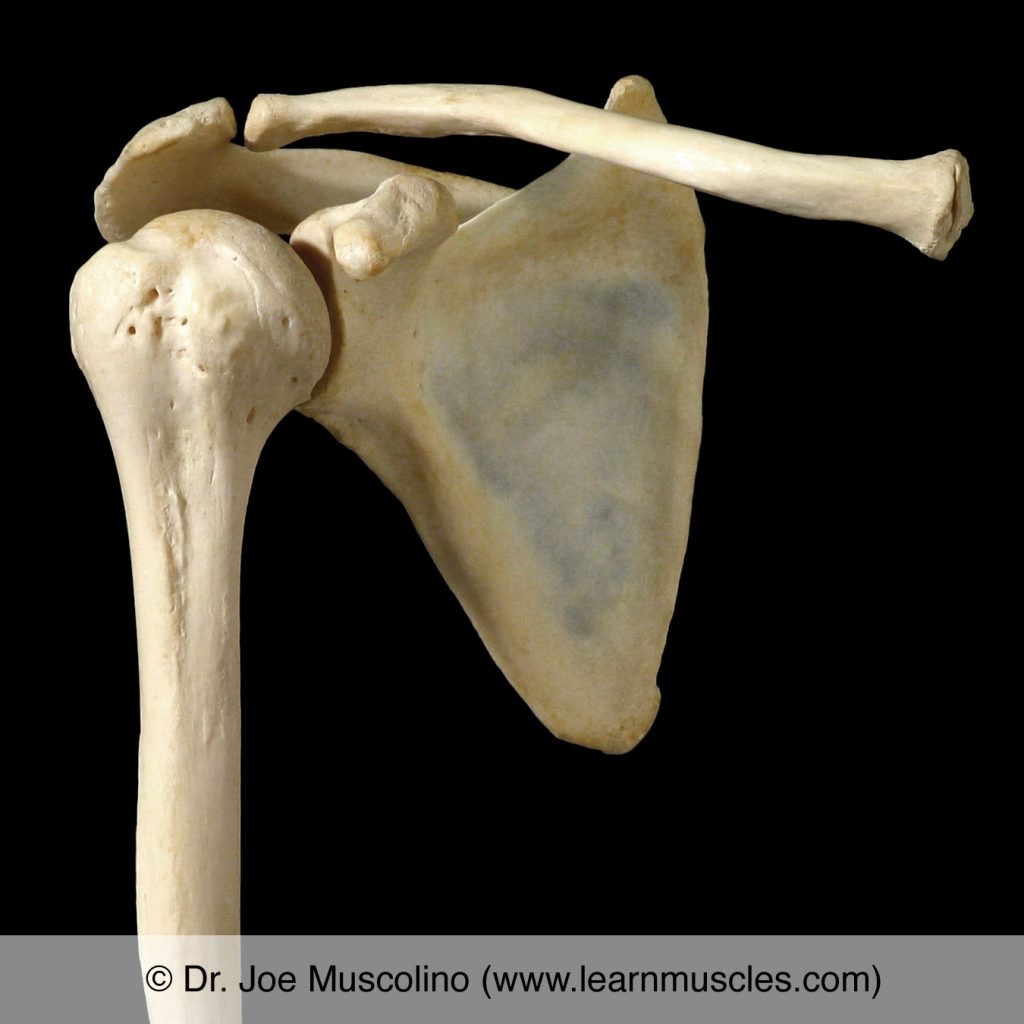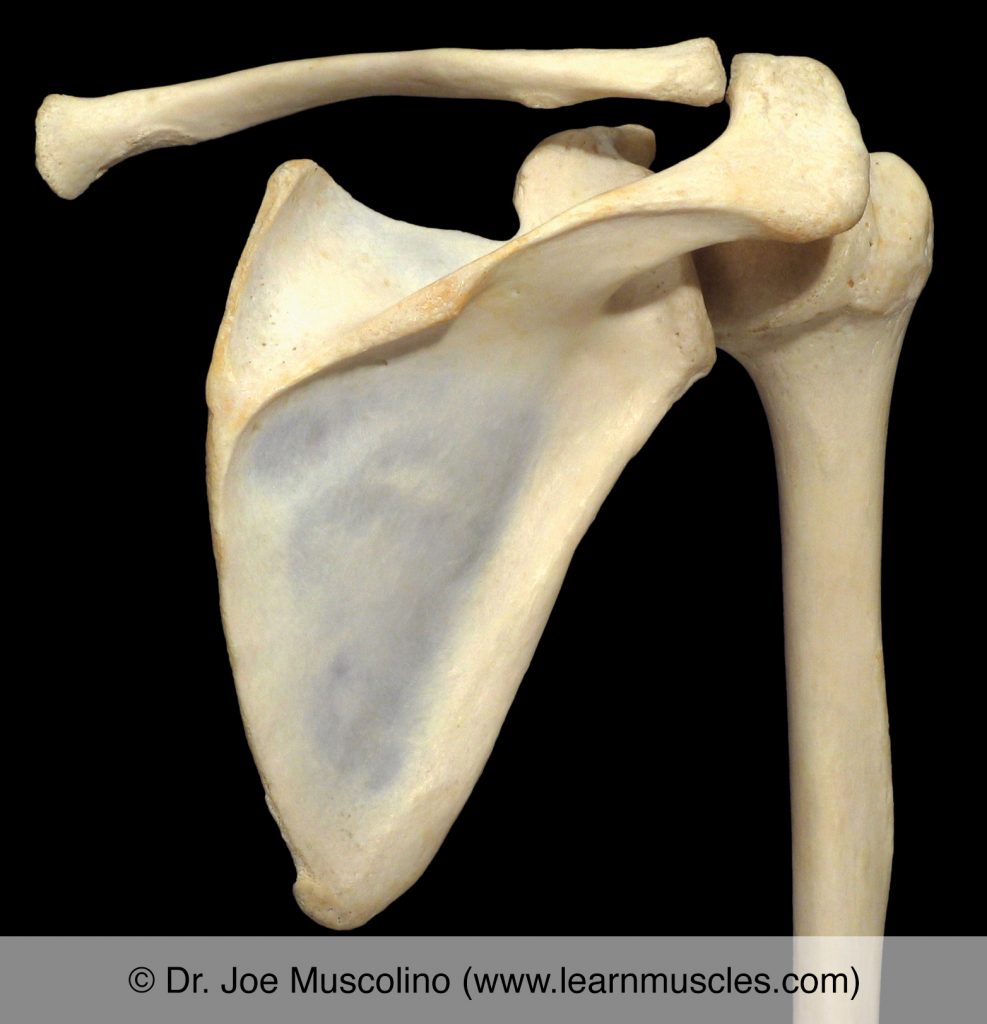- The shoulder joint, also known as the glenohumeral joint, is a synovial triaxial (polyaxial) joint.
- It is formed by the glenoid fossa of the scapula meeting the head of the humerus.
- It allows motion in all three cardinal planes:
- flexion/extension in the sagittal plane.
- abduction/adduction in the frontal (coronal) plane.
- lateral rotation/medial rotation (external/internal rotation) in the transverse (horizontal) plane.
NOTES:
- The glenohumeral (GH) joint is the most mobile joint of the human body.
- When the humerus moves at the glenohumeral joint, there is a coupled action of movement of the scapula at the scapulocostal joint. This coupling of joint actions is called scapulohumeral rhythm.
- With scapulohumeral rhythm, there is also a coupling of movement of the clavicle at the sternoclavicular joint.

Anterior view of the glenohumeral joint on the right side of the body.

Posterior view of the glenohumeral joint on the right side of the body.
